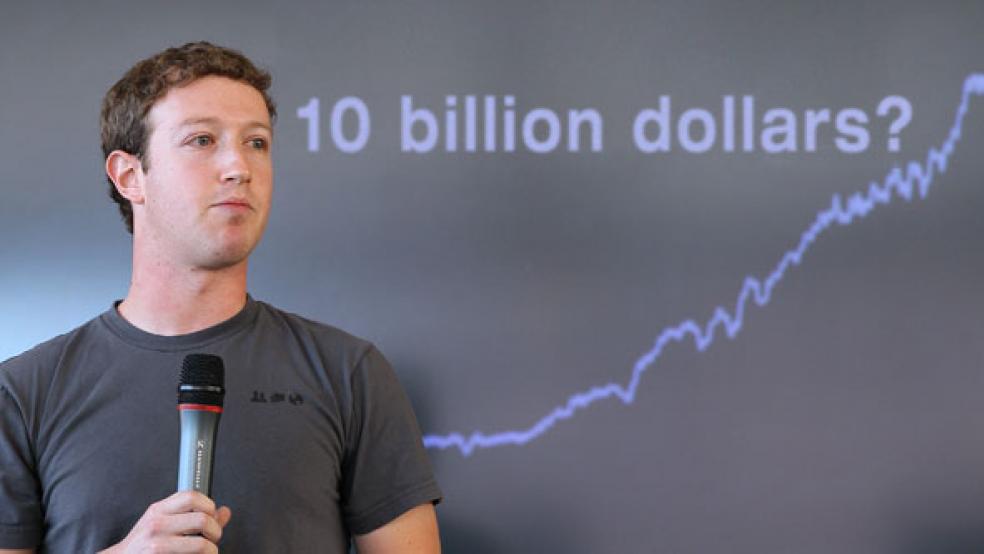At last, the IPO that the investment world has been awaiting with varying degrees of impatience appears likely to make its debut. And if those who have had an early peek at Facebook’s pending IPO filing are right, the deal could value the social networking giant at $100 billion – more than four times the valuation that Google (GOOG) commanded during when it went public not quite a decade ago.
But while there will be a lot of buzz surrounding Facebook as the road show gets underway and eager investment bankers talk up the company’s unparalleled ability to bring people together – have dinner! Organize a high school reunion! Plan a revolution in the Middle East! – it’s important not to forget that what is more important than where Facebook has been is where it is going next. How much more room is there for the company – already ubiquitous among even Internet novices in their 70s and 80s – to generate the kind of outsize growth in revenues and profits that investors will expect in exchange for the premium valuation it is seeking? Unlike another iconic brand, Apple (AAPL), Facebook doesn’t manufacture a tangible item that can be purchased, so its growth will rely on its ability to generate a different kind of growth and produce earnings from different kinds of places.
When the first generation of Internet companies began going public in the mid-1990s, they were at an earlier stage in their development. Netscape was surrounded by buzz, sure, but it was the kind of buzz that follows a technology that is still in the process of changing the world. Even when eBay (EBAY) went public back in 1998, the company was valued at about $735 million. Even after the tremendous first-day pop in eBay’s share price – it priced at $18, opened at $53.50 and closed the first day of trading at $47.375 a share – eBay was still worth less than $2 billion. The reaction to the IPO reflected investor enthusiasm – but the market capitalization still reflected the fact that while this was a business with tremendous potential, it was still in the early stages of the game. The risk was still very apparent – and indeed, many members of the IPO class of 1998 didn’t survive long as independent companies.
Google waited until later in its corporate lifecycle – it was five years old, while eBay had been only three – to go public. Like Facebook, the anticipation surrounding its eventual IPO was tremendous, and the stock price has soared in the years since the August 2004 IPO. Again, however enormous the $23 billion valuation appeared at the time, there was still plenty of growth left on the plate for public stock market investors to sample.
Now the question is whether that’s also true of Facebook. If it forges ahead with its IPO plans this year, the company will be eight years old when it goes public, more mature than either eBay or Google. While that makes it a less risky investment, it also means that at least some of the explosive growth typical of a successful technology startup’s early years is already behind it – and the beneficiaries of that growth were insiders and early investors. However big Facebook’s brand may be, can that compensate for its relative maturity?
RELATED: Inside Facebook's New Menlo Park Headquarters
Undoubtedly, the Morgan Stanley (MS) and Goldman Sachs (GS) bankers likely to underwrite the deal will spend a lot of time reminding all of us potential investors of the company’s tremendous achievements during the last year. How many “startup” technology companies have been the focus of two books and a Hollywood movie nominated for several Oscars? But a lot of investors have been able to make their way to the table already, including a round of financing from wealthy overseas individuals via Goldman Sachs. But investors – at least those who don’t get caught up in the IPO hype – will want to see some evidence that Facebook is likely to continue to grow apace and translate that growth into revenues and profits.
Facebook isn’t another eBay or another Google; 2012 isn’t 1998 or 2004. While there’s certainly a chance for another blockbuster IPO, investors will need to take a long, hard look at what the company says about its future growth prospects in its upcoming S-1 filing before rewarding it with that $100 billion valuation.






